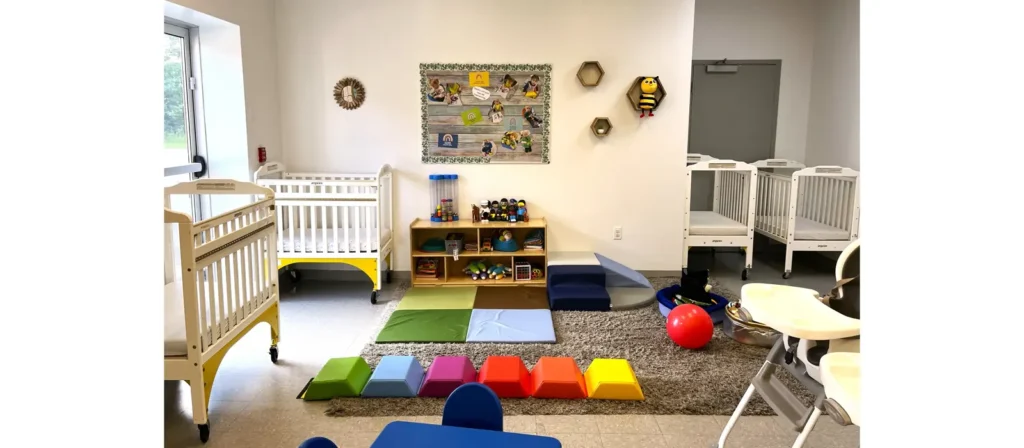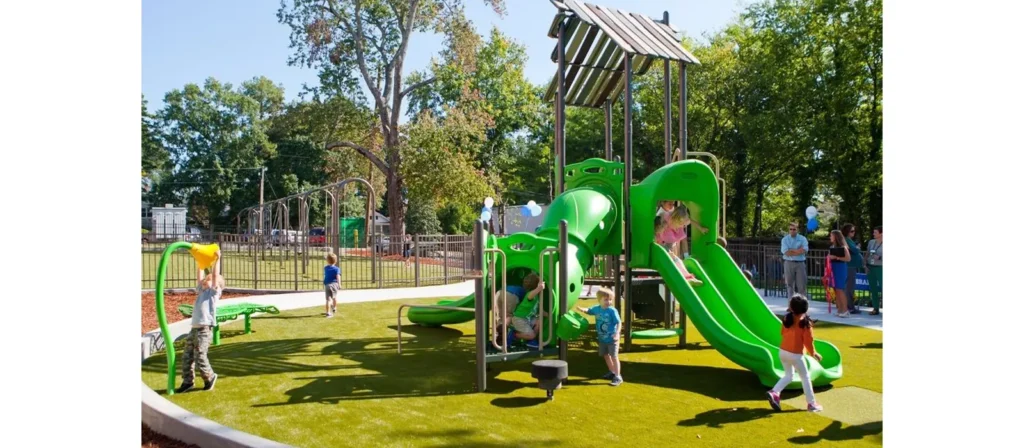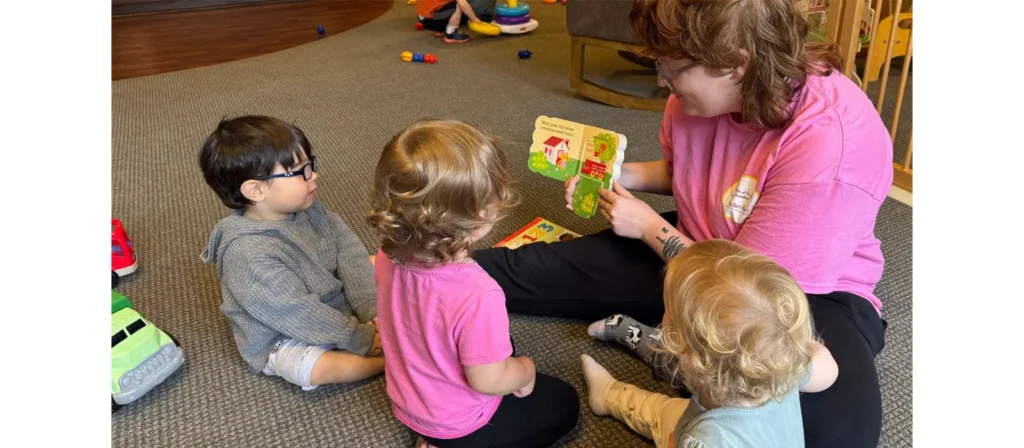Do you know if your daycare facility meets the highest safety standards? Are your current procedures, staff training, and emergency protocols strong enough to protect every child in your care? Can you confidently say that every corner of your center supports a culture of safety, accountability, and preparedness?
In today’s childcare landscape, daycare safety is not optional. It is a professional obligation and a legal responsibility. Ensuring the safety and well-being of young children requires more than good intentions. It demands structured policies, rigorous oversight, continuous staff development, and a commitment to best practices. Daycare centers must proactively identify risks, implement preventive strategies, and create an environment where safety is embedded in daily operations.
This comprehensive guide on daycare safety is designed to support administrators, directors, and childcare professionals in evaluating and strengthening safety measures across every aspect of their facility. From A to Z, we cover the essential components that uphold safety, build trust, and ensure compliance with industry standards.

Why Daycare Safety Matters in Childcare Operations
Creating and maintaining a safe daycare environment is not just an ethical duty. It is an operational requirement for any childcare center that aims to deliver quality, compliance, and trust. Here are the three fundamental reasons why daycare safety must be the cornerstone of all childcare operations.
Children Spend a Significant Part of Their Day in Daycare
More than 12.5 million children under age five in the U.S. spend six to ten hours a day in childcare settings, making daycare a central part of their daily lives. With such extended time spent away from home, ensuring daycare safety becomes essential. According to the CDC, around 200,000 childcare-related injuries require emergency treatment annually, with most caused by preventable incidents like falls, playground accidents, and choking. These numbers highlight the critical need for rigorous, daily safety practices across all daycare environments.
Safety Builds Trust with Families and the Community
Parents rely on childcare providers not only to educate their children but to protect them. A safe daycare environment builds trust with families and reassures them that their children are in capable hands. Trust is not given lightly. It is earned through consistent practices, transparent communication, and a proven commitment to safety. Once broken, trust can be difficult to restore. This is why centers that prioritize safety often experience stronger family partnerships, higher enrollment, and long-term reputational benefits.
Compliance with Legal Standards Is Non-Negotiable
Every daycare must adhere to local, state, and federal regulations that define clear expectations for health and safety. These include building codes, staff-to-child ratios, sanitation procedures, emergency protocols, and supervision requirements. Failing to meet these standards can lead to fines, license revocation, or even criminal charges. More importantly, non-compliance puts children at serious risk. By prioritizing daycare safety, administrators not only protect children but also ensure the legal and professional standing of the center.

Core Daycare Safety Strategies Every Center Must Implement
Daycare safety does not happen by chance. It requires deliberate planning, clear systems, and consistent execution. For administrators and educators, building a reliable safety framework begins with understanding the core strategies that protect children in all areas of care. These strategies form the backbone of a high-functioning, risk-aware, and legally compliant daycare operation.
Below are the foundational strategies that every childcare center should implement to maintain a safe, healthy, and trustworthy environment for children, families, and staff.
Establish and Enforce Comprehensive Safety Policies
A daycare center must begin with written safety policies that clearly outline rules, responsibilities, and emergency procedures. These should cover everything from staff conduct and supervision protocols to hygiene, food handling, and playground usage. Policies must be communicated to all employees and updated regularly to reflect new regulations or lessons learned from incident reports. Safety cannot be left to individual interpretation. A documented, center-wide standard is essential for accountability and consistency.
Conduct Rigorous Staff Training and Certification
Every staff member should be thoroughly trained in safety procedures before working with children. This includes first aid, CPR, child abuse prevention, emergency evacuation, and supervision techniques. In addition, staff should undergo regular refresher training and drills to ensure knowledge is retained and procedures are understood. A well-trained team is a daycare’s first line of defense against accidents and emergencies. Certification records should be kept on file and reviewed during internal audits or regulatory inspections.
Maintain Safe and Age-Appropriate Environments
Children at different developmental stages require tailored safety measures. Infants, toddlers, and preschoolers should be grouped and supervised appropriately, with furniture, toys, and equipment that match their specific needs. All items must be clean, stable, and free of hazards such as sharp edges or small detachable parts. According to the Consumer Product Safety Commission (CPSC), toys cause an estimated 226,000 injuries annually among children under 15, with choking from small parts posing the greatest risk to those under 3. A 2023 recall review showed that 40% of toy-related injuries in daycares involved age-inappropriate products. To uphold daycare safety, electrical outlets must be covered, cleaning supplies securely stored, and walkways kept clear. Daily inspections help identify and correct potential hazards before children enter the space.
Furniture Safety: Classroom furniture should be stable, age-appropriate, and rounded at the edges to prevent injuries. Shelving must be secured to avoid tipping, and surfaces should stay smooth, clean, and free of cracks or splinters. All materials should meet child-safe standards.
Toy Safety: Toys must match the appropriate age group and contain no small detachable parts for young children. Soft toys require regular cleaning, and any damaged toys should be removed immediately. Only items that meet recognized safety standards should be used.
Equipment Safety: Large equipment such as climbers, slides, and soft-play pieces must remain steady, nonslip, and regularly checked for loose parts. Floors around active play areas should offer shock absorption. Electrical devices must be placed out of children’s reach with cords secured to prevent tripping or pulling.
Implement Strict Access Control and Visitor Procedures
Protecting children begins with controlling who enters and exits the facility. Every daycare must have secure entry systems, such as coded doors, check-in kiosks, or staff-monitored entrances. Visitors should be logged, identified, and accompanied at all times. Staff must be trained to recognize unauthorized individuals and know the proper response procedures. A child should never be released to anyone not explicitly authorized by the parent or guardian in writing.
Create Clear Emergency Plans and Practice Regular Drills
Emergencies can happen at any time, and preparedness is key to responding effectively. Daycares must have detailed emergency plans for fire, severe weather, lockdown situations, medical incidents, and natural disasters. These plans must be practiced regularly through drills, and every staff member should know their role and responsibilities. Communication tools, such as emergency contact sheets and backup phone systems, must be accessible and up to date. The goal is to react quickly and calmly under pressure while ensuring every child is accounted for.
Establish Hygiene and Health Monitoring Protocols
A clean environment is critical for both safety and wellness. Establish daily sanitation procedures for toys, furniture, bathrooms, and food areas. Children must be guided through routines such as handwashing before meals and after bathroom use. Staff should screen children daily for signs of illness and follow clear exclusion guidelines when children are sick. Maintaining high hygiene standards helps prevent the spread of viruses, bacteria, and infections throughout the center.
A child must be kept home or will be sent home from the center if they exhibit any of the following symptoms:
Fever: A temperature of 100.4°F (38°C) or higher. A child must be fever-free for a full 24 hours without the use of fever-reducing medication (like Tylenol or Motrin) before returning to the center.
Vomiting or Diarrhea: Any instance of vomiting or two or more instances of diarrhea. The child must be symptom-free for 24 hours before returning.
Specific Diagnoses: A child diagnosed with a contagious condition (e.g., Strep Throat, Pink Eye, Hand-Foot-and-Mouth) must complete at least 24 hours of antibiotics (if prescribed) and/or provide a doctor’s note clearing them to return.
Unexplained Symptoms: Significant lethargy, unexplained rashes, or persistent, disruptive coughing that interferes with the child’s ability to participate in activities.
Use a Daily Safety Inspection Checklist
Daily walkthroughs using a structured safety checklist help staff identify and correct small issues before they become major problems. This checklist should cover facility cleanliness, physical hazards, first aid supplies, fire extinguishers, evacuation routes, and playground safety. It should be completed by a designated staff member and reviewed by a supervisor to ensure accountability. These simple, proactive checks can prevent costly accidents and reinforce a culture of daily safety.
For example, a practical daily checklist for staff could include specific, actionable prompts:
- Entry & Exits: Are all pathways, hallways, and emergency exits completely clear of obstructions?
- Classroom Hazards: Are all electrical outlets covered? Are all blind/curtain cords secured high and out of reach? Are heavy items stored on low shelves?
- Sanitation: Is the diaper changing station fully stocked (gloves, wipes, disinfectant) and clean? Are handwashing sinks stocked with soap and paper towels?
- Play Areas: Are toys inspected for sharp edges or broken parts? (Remove any damaged items immediately).
- Emergency Gear: Is the first-aid kit fully stocked and accessible (not locked)? Is the fire extinguisher visible and its pressure gauge in the “green” zone?
- Playground: Is the gate latch working and securely closed? Is the ground surfacing (e.g., mulch, rubber) adequate under climbing structures? Is the equipment free of standing water or visible hazards?
Detailed Safety Practices for Different Daycare Areas and Activities
A truly safe daycare environment requires more than general policies. It demands careful attention to detail in every room, zone, and daily activity that children interact with. Each area presents unique safety challenges, and administrators must ensure that staff are trained to maintain vigilance in all physical spaces.
Below is a breakdown of the essential safety considerations and best practices for the most common daycare areas and daily routines.
Classrooms and Play Areas
Classrooms are the core of any daycare operation, and they must be safe, clean, and age-appropriate. Furniture should be stable, rounded, and scaled to children’s size. Electrical outlets must be covered, cords secured, and heavy items stored on lower shelves. Toys should be free of sharp edges and small parts that pose choking risks.
Supervision is critical. Maintain appropriate staff-to-child ratios and ensure that all children are always within sight and hearing distance. Activities should be structured, but transitions between them must be managed carefully to prevent crowding, pushing, or confusion.
All play materials should be cleaned daily, and damaged items must be repaired or replaced immediately. Floors must be dry and free from loose rugs or items that can cause tripping. Daily inspection of the classroom can catch issues early and prevent accidents.

Outdoor Playground and Recreational Areas
Outdoor play is essential for child development, but it also presents higher risk for injury. Playgrounds must be enclosed with secure fencing and equipped with soft ground surfacing like rubber mats or mulch to absorb falls.
Play structures should be designed for the age group using them and must be inspected weekly for loose bolts, sharp edges, or wear and tear. Staff must be positioned to oversee all areas of the playground with no visual blind spots. Children should be instructed on how to use the equipment safely and be supervised closely during physical activities such as running, climbing, or ball games.
Weather conditions should be monitored, and outdoor play should be suspended in cases of extreme heat, rain, snow, or poor air quality. Sunscreen, hydration, and appropriate clothing must be part of the daily outdoor routine.
Nap and Rest Areas
During rest periods, the focus shifts to calm and monitoring. Each child should have their own designated nap mat or crib, which must be cleaned regularly and spaced at safe distances. Infants must always be placed on their backs to sleep, following safe sleep guidelines that reduce the risk of Sudden Infant Death Syndrome (SIDS).
Rooms should be dimly lit and quiet but still supervised. Staff must be alert during nap time and periodically check each child for signs of discomfort, illness, or restlessness. No blankets, pillows, or toys should be placed with sleeping infants unless explicitly approved by health guidelines.
Temperature and ventilation in nap rooms should be regulated to ensure a comfortable and safe sleeping environment.
Upgrade Nap Time With Safe, Stackable Daycare Cots
Give every child the restful break they need with our high-quality daycare cots, designed for safety, durability, and daily use. At TOP Montessoris, we provide stackable, easy-to-clean nap solutions that meet early childhood standards while making storage and sanitation simple. Perfect for preschools and childcare centers focused on comfort, hygiene, and compliance.
 Shop Daycare Cots
Shop Daycare Cots
Restrooms and Changing Stations
Restrooms and diaper-changing areas are high-risk zones for hygiene and privacy violations. Children should be escorted to the restroom based on age and ability, and staff must maintain visibility without compromising the child’s dignity.
Changing stations must be disinfected between uses, and disposable gloves should be worn and discarded after each change. Soiled diapers and wipes must be disposed of in sealed, hands-free bins. Handwashing protocols must be followed both before and after changing.
Cleaning supplies must be stored out of children’s reach, and non-slip flooring is essential to prevent falls.
Food Preparation and Meal Areas
Food safety is a critical component of daycare safety. Whether food is provided by the center or brought from home, clear policies must be in place for storage, handling, and serving. Perishable items must be refrigerated at safe temperatures, and any reheating must follow safe cooking standards.

Staff responsible for preparing food must have proper training in food hygiene and wear gloves when handling ready-to-eat items. Tables and chairs must be sanitized before and after each meal, and children must be monitored closely while eating to prevent choking.
Food allergies must be clearly documented and communicated to all staff. Cross-contamination must be avoided by using designated utensils, cleaning materials, and preparation areas for allergy-sensitive meals.
Arrival and Dismissal Zones
Transitions during drop-off and pick-up are often chaotic and require strict control. Entry points must be staffed and secure, with only authorized individuals allowed to pick up children. Sign-in and sign-out logs or digital systems should be used to document each arrival and departure.
Curbside or driveway areas must be marked with signs, speed limits, and traffic flow indicators to protect children walking in or out of the building. Staff should be present to supervise these transitions and ensure no child leaves without proper verification.
Clear communication with parents about timing, identification, and procedures reduces confusion and enhances safety during these busy periods.

Emergency Preparedness and Response in Daycare Settings
Emergencies can strike without warning, and when they do, a daycare’s response can mean the difference between calm resolution and chaos. Whether it is a fire, severe weather, medical crisis, or security threat, every childcare center must be fully prepared to protect the children and staff in its care. Emergency preparedness is not a one-time task — it is an ongoing system of planning, training, practicing, and refining.
Below are the essential components of a strong emergency response strategy for daycare environments.
Develop Comprehensive Emergency Plans
Every daycare must have written emergency response plans tailored to different types of incidents. These should cover a wide range of scenarios including fire, flood, earthquakes, power outages, active threats, medical emergencies, and missing children.
Each plan must outline:
- Evacuation routes and assembly points
- Shelter-in-place procedures
- Chain of command and staff roles
- Communication protocols with parents and authorities
- Child accounting and supervision during emergencies
These plans should be reviewed and updated at least annually and whenever major facility changes occur.
Train Staff in Emergency Protocols
Emergency plans are only effective when every staff member knows exactly what to do. All employees, including part-time and temporary workers, must be trained in emergency procedures as part of their onboarding process.
Training should include:
- Fire extinguisher use and evacuation
- First aid and CPR certification
- Crisis communication techniques
- Lockdown procedures and threat identification
- Handling distressed or panicked children during emergencies
Staff must be able to stay calm, give clear instructions, and make rapid decisions under pressure. Role-playing and scenario-based discussions can help improve confidence and response times.
Conduct Regular Drills and Simulations
Just as children learn through repetition, so do adults. Conducting monthly safety drills ensures that staff and children become familiar with emergency procedures and respond instinctively when real events occur.
Drills should include:
- Fire drills with full evacuation
- Shelter-in-place exercises for weather events
- Lockdown drills simulating security threats
- Missing child simulations
- Medical emergency response rehearsals
After each drill, conduct a debrief with staff to identify strengths and areas for improvement. Keep written records of all drills for internal evaluation and regulatory compliance.
Ensure Emergency Supplies Are Ready and Accessible
Daycare centers must be stocked with essential emergency supplies in designated, clearly marked locations. Supplies should include:
- Fully stocked first aid kits
- Emergency contact lists for all children
- Flashlights and backup batteries
- Emergency food and water for at least 72 hours
- Blankets, diapers, and hygiene supplies
- Communication tools such as radios or emergency cell phones
Staff should know where each item is stored and how to access them quickly when needed. Supplies must be checked monthly and replaced as needed.
Establish Clear Communication with Families
During a crisis, timely and accurate communication with families is essential. Daycares should have multiple channels available, such as text alerts, phone trees, email blasts, and app notifications, to keep parents informed during emergencies.
Prepare templates in advance for different types of incidents and designate staff responsible for sending updates. Make sure contact information for all families is current and easily accessible at all times.
After the emergency is resolved, send a full report to parents that explains what happened, how the center responded, and any follow-up steps being taken.
Coordinate with Local Authorities and Emergency Services
Develop working relationships with local police, fire departments, and emergency medical responders. Invite them to tour the facility, review safety plans, and participate in drills. This collaboration ensures faster, more effective support during real emergencies.
Display emergency numbers in prominent locations and provide all staff with contact lists for key agencies and internal leadership.
Strong emergency preparedness is a defining characteristic of a responsible childcare operation. When safety plans are clear, practiced, and supported by every staff member, a daycare center becomes a truly secure environment where children and adults alike can respond to the unexpected with confidence and care.
Staff Training and Safety Culture in Daycare Operations
Safety is not a one-time checklist. It is a mindset, a standard, and most importantly, a shared responsibility. While policies and procedures set the framework for a safe daycare, it is the staff who bring those rules to life. Without consistent training and a strong safety culture, even the best-written protocols can fail in practice.
Building a team that is not only trained but genuinely committed to daycare safety requires ongoing effort, strategic leadership, and clear communication.
Start with Comprehensive Safety Training for All Staff
All staff members, from administrators to assistants and part-time aides, must receive structured training on every aspect of daycare safety. This should begin during onboarding and continue throughout their employment.
Key training areas include:
- First aid and CPR certification
- Safe sleep practices for infants
- Child supervision standards and ratios
- Food safety and hygiene protocols
- Recognizing signs of abuse or neglect
- Emergency procedures and evacuation drills
- Managing allergies and medical emergencies
- Safe handling of cleaning products and chemicals
Training should be interactive, hands-on, and based on real scenarios to ensure staff understand how to apply the information in daily situations.
Make Safety Training a Continuous Process
One-time training is not enough. Regulations, best practices, and even facility conditions evolve over time. To keep staff prepared and informed, implement a continuous professional development program that includes:
- Monthly or quarterly safety refreshers
- Annual recertification in first aid and emergency response
- Updates on policy changes or new equipment usage
- Group discussions on recent incidents and lessons learned
- Guest speakers or workshops with external safety experts
Regular training fosters consistency and strengthens the team’s ability to react appropriately in unexpected situations.
Assign Clear Safety Roles and Responsibilities
Each staff member should understand their specific role in maintaining safety. Whether it is conducting daily inspections, monitoring the playground, checking food temperatures, or handling emergency drills, responsibilities should be clearly assigned and documented.
This reduces confusion during high-stress situations and ensures that all safety procedures are executed without gaps or overlap. Supervisors should periodically review task completion and provide feedback or retraining when necessary.
Encourage Open Communication and Incident Reporting
Creating a culture where safety is openly discussed and concerns are promptly addressed is vital. Staff should feel comfortable reporting hazards, near-misses, or violations without fear of blame or retaliation. Encourage a team mindset where every individual is accountable not only for their actions but also for recognizing and addressing unsafe practices.
Use tools such as anonymous reporting forms, suggestion boxes, or digital platforms to support this culture of transparency. Every incident or concern is an opportunity to improve.
Lead by Example at the Management Level
Daycare directors and administrators must set the tone. When leadership models attentive, rule-based behavior and takes every safety concern seriously, staff are more likely to follow suit. Avoid shortcuts and visibly enforce rules to show that safety is a non-negotiable priority.
Hold regular staff meetings focused on safety topics and celebrate when teams successfully handle situations according to protocol. Recognition reinforces positive behaviors and builds morale.
Integrate Safety into the Daycare’s Identity and Mission
Finally, make safety a core part of the daycare’s brand and philosophy. Display safety commitments in staff areas, handbooks, and parent communications. Include safety goals in staff evaluations and center improvement plans.
When daycare safety becomes part of the organization’s identity and not just a set of rules, it influences decisions at every level and builds a stronger, more unified team.

Auditing, Reviewing, and Maintaining Compliance in Daycare Safety
A daycare safety plan is only as effective as its ongoing enforcement. Even the most well-designed systems can fail without regular oversight, assessment, and improvement. To maintain a consistently high standard of safety, daycare centers must integrate structured internal audits, external inspections, and a continuous feedback loop into their operations.
Compliance is not just about passing inspections. It is about actively managing risk, preventing incidents, and ensuring that the center remains a trustworthy place for children and families every single day.
Implement Daily and Weekly Internal Safety Inspections
Routine inspections are the foundation of safety maintenance. Assign specific staff members to complete daily walkthroughs using a standardized checklist. This checklist should cover:
- Classroom and playground safety
- Cleanliness and sanitation
- First aid kit contents and expiry dates
- Fire extinguisher visibility and pressure
- Electrical outlet covers and hazard removal
- Door locks and access control
- Supervision practices and child counts
These inspections should be documented, signed, and submitted to a supervisor for review. Weekly summaries can identify patterns or recurring issues that need correction.
Schedule Monthly and Quarterly Administrative Reviews
Beyond daily checks, directors and administrative teams should perform more detailed safety reviews on a scheduled basis. These reviews should evaluate:
- Incident and accident logs
- Staff training and certification status
- Emergency drills and response times
- Maintenance reports and equipment servicing
- Policy compliance by all staff members
Use these reviews to track safety goals and update procedures based on new observations, staff feedback, or changes in local regulations.
Maintain Readiness for External Licensing Inspections
State and local regulatory agencies conduct regular inspections to verify compliance with child care laws. Preparation for these visits should be ongoing, not last-minute. Maintain up-to-date records of:
- Employee background checks and training
- Enrollment and attendance logs
- Safety protocols and emergency plans
- Parental consent forms and allergy lists
- Facility licenses and insurance documentation
Conduct mock inspections to evaluate your preparedness and train staff to respond professionally and accurately during official visits.
Use Data to Drive Safety Enhancement
Collect and analyze safety-related data regularly. Track how many incidents occur, in what areas, and at what times. Look for trends that can inform changes. For example:
- An increase in minor injuries near a specific play structure may indicate the need for repairs or removal
- Frequent handwashing violations could signal a gap in staff training
- Delays during evacuation drills may reveal a need for more staff coverage or clearer signage
Let data guide decisions rather than relying solely on assumptions or complaints.
Stay Updated with Regulatory and Industry Changes
Childcare safety standards evolve as new risks emerge and best practices improve. Subscribe to bulletins from licensing agencies, participate in industry conferences, and connect with professional associations. Use this information to regularly revise internal policies, training content, and inspection checklists.
Staying informed is one of the most effective ways to prevent complacency and ensure that your daycare is always operating at the highest level of safety and compliance.
Building a Sustainable Daycare Safety System from A to Z
Creating a safe daycare environment is not a one-time achievement. It is an ongoing responsibility that requires leadership, structure, vigilance, and collective commitment. Daycare safety is not just about following rules. It is about honoring the trust that families place in your care and safeguarding the well-being of the most vulnerable members of our community.
A sustainable safety system begins with a mindset of prevention. It is reflected in every policy, every classroom setup, every staff interaction, and every decision made throughout the day. From the way children are welcomed in the morning to how the facility prepares for emergencies, each action is part of a broader framework designed to protect and empower.







